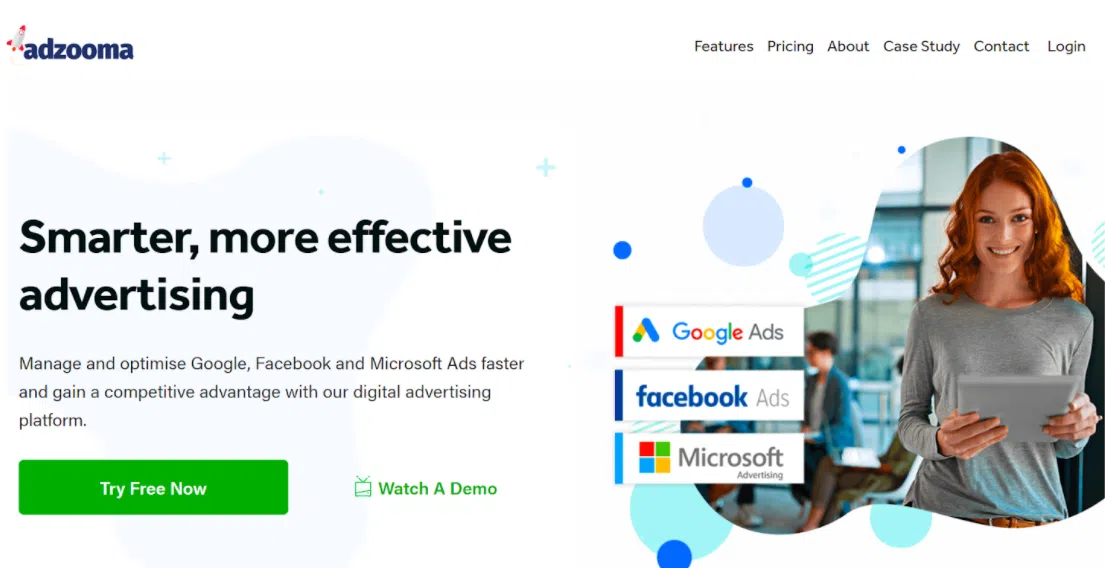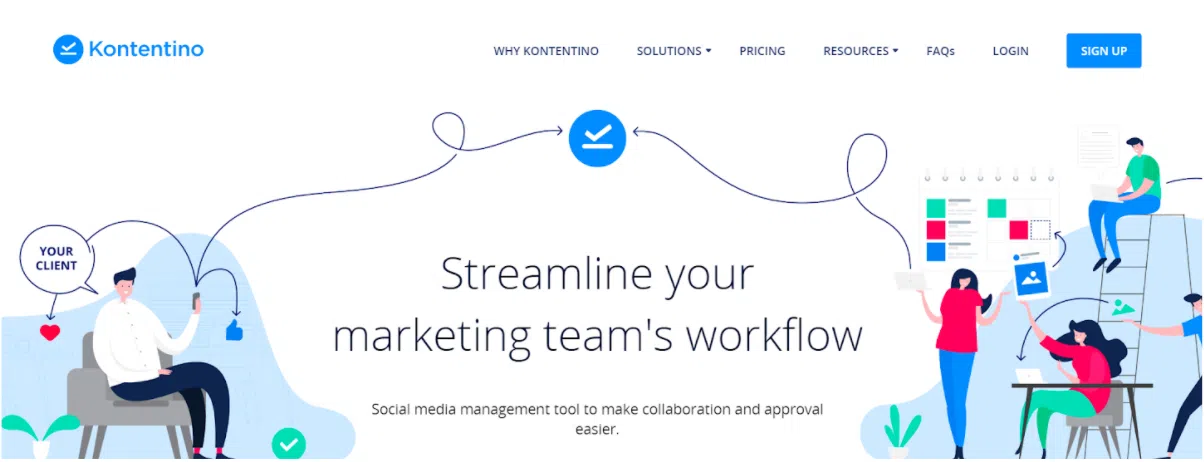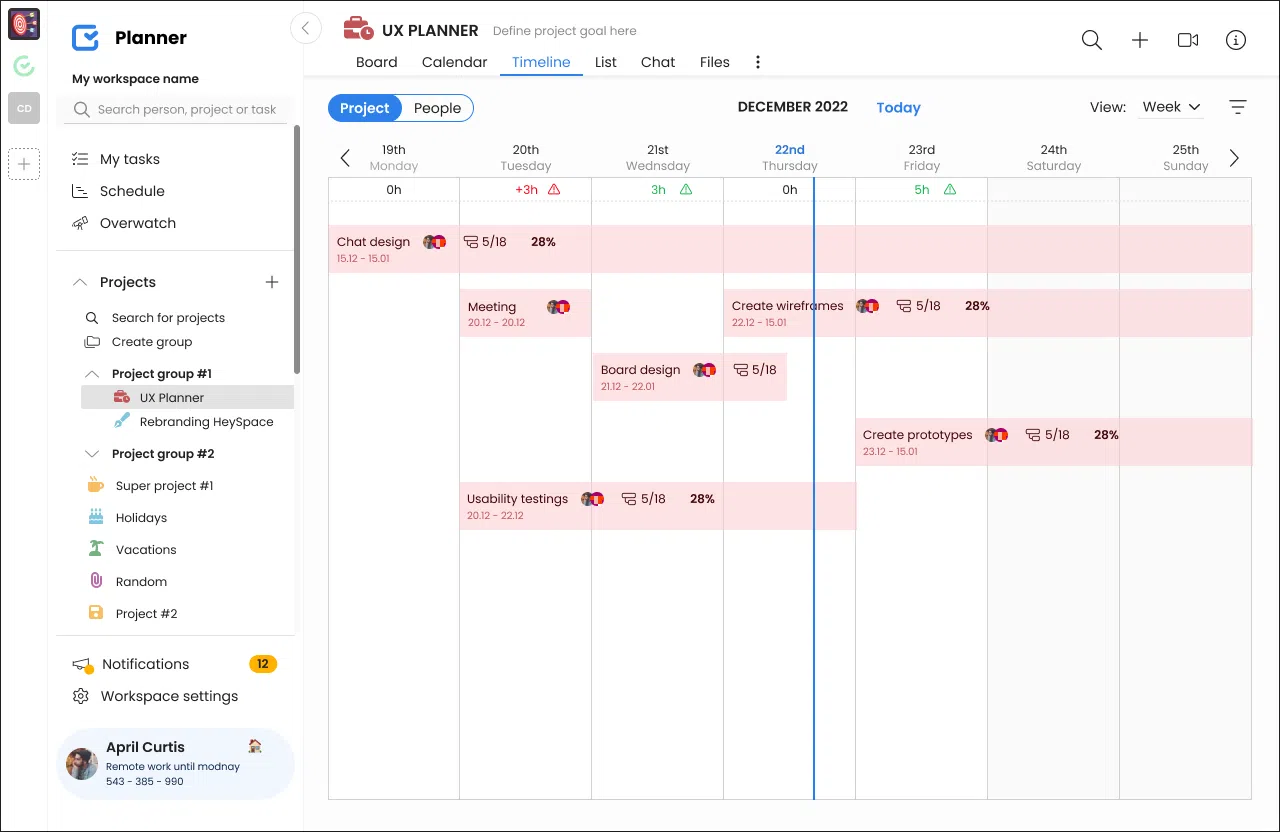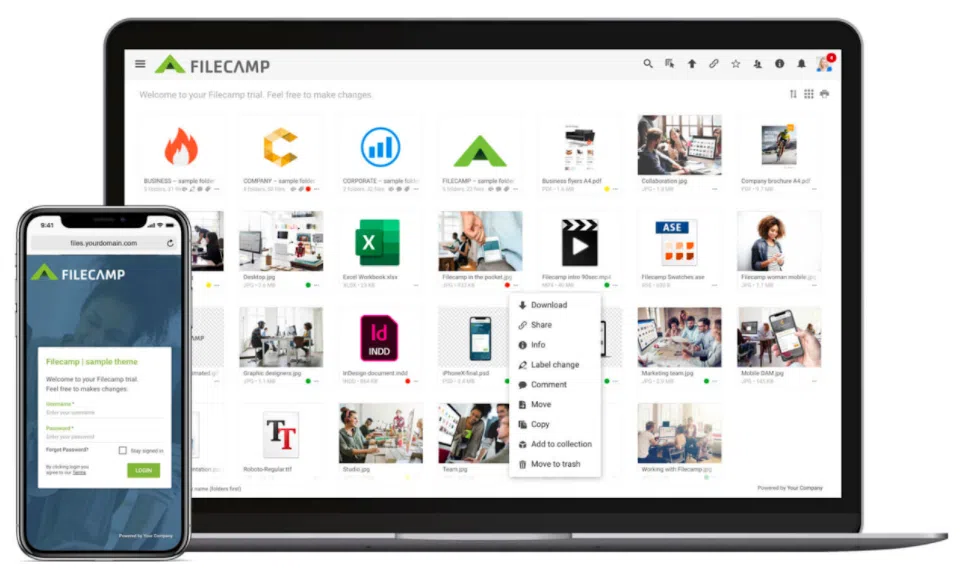How to collaborate with your clients? The secret of successful cooperation
-
Ola Rybacka
- February 4, 2023
- 8 min read

Everyone who runs a business would like to have good contact with their customers, but not everyone knows how to do so.
At a time when business is becoming increasingly more customer-oriented, you need to keep up. Some challenges must be met to keep your clients satisfied. Hiring customer service specialists or going the extra mile are not the only things that you can do. You will also need tools to improve communication.
If you want to learn more about customer communication and how to take it to the next level, you’re in the right place.
Why is it worth taking care of communication with your clients?
Even if your product is of high-quality and drives sales, you still need to provide customer service. And the basis of good customer service lies in communication.
- In terms of customer service, the first thing that comes to mind is customer loyalty. And that’s how it really is. All good relationships should be based on trust and loyalty, including those with clients too. 73% of customers become a huge and loyal fan of a company due to its friendly customer service.
- One satisfied customer will bring more with them – 77% of satisfied customers are likely to recommend the company to a friend. So it pays off to keep your customers satisfied, doesn’t it?
- There are many channels on which you can communicate with clients. Different customers have their own favorites. 62% of customers use email for customer service. 48% the phone, 42% live chat, and 36% “Contact Us” forms. The better integrated the channels are, the shorter and better the project approval process will be.
- No matter if you have chosen PPC, PPA, or other marketing strategies, cost is always a big factor. How can customer service decrease it? Investing in new customers can cost from 5 to 25 times more than keeping existing ones satisfied. In a nutshell, it is better to retain customers than cast a net looking for them.
- If you are still feeling unconvinced, here is a short statistic: 87% of consumers believe that companies should provide a more compatible customer experience.
How to take care of customer communication?
Since you now know why it is worth taking care of customer relationships, it’s time to learn how to do so. To help you systematize your actions, we’ll show you some strategies and ideas that you can use to improve customer communication and turn a corner.
As we have already mentioned strategies – it’s good to have some. Depending on the industry you work in, you need to adjust your strategies accordingly. Whether your clients are young millennials or the generation of your parents, customer communication strategy should be chosen wisely. It doesn’t have to be 5, 10 or 15. Sometimes just 2 or 3 plans of action are enough to keep the world spinning. Take a look at some ideas below and get inspired to act.
1. Make communication easy and clear
To communicate fluently, customers need to know how to reach you. Make sure your email addresses, phone numbers and chats are prominently displayed and that everyone will know how to use them. For your emails, you can use an mail signature generator to create a simple tag and link it to your LinkedIn profile or any other communication handle that you have. This doesn’t mean only new customers. Dialogue with regular customers is equally important, so if your email address has changed then make sure they are informed about it, othervise they’ll get stuck in the cycle of veryfing email addresses. Proactive and personalized communication, coupled with the power of customer service automation, fosters stronger customer relationships and fosters trust. Tailor your interactions to their preferences, promptly addressing inquiries and concerns, while harnessing feedback to continually enhance their experience. You can even use an AI email generator to craft engaging emails.
Communication needs to be clear and understandable. Remember to choose the style in which you communicate wisely. If customers do not understand your intentions or ideas, they will most likely refuse to take the desired actions. Misunderstandings are the biggest enemy of customer collaboration. Use simple language to be sure that each of your clients will have the opportunity to get the full picture of your actions.
Additionally, consider implementing feedback collection mechanisms to gather valuable insights from your customers. Feedback collection can help you understand their needs, preferences, and areas for improvement. Gamification software can make this process more enjoyable and interactive for your customers.
Remember to be responsive and try to answer your clients in less than 24 hours. Of course, in case of emergencies, it should be even faster. Consistent and fast replies to clients build a bond of trust.
2. Take advantage of technological benefits
Use software that will enable clients to track tasks or deadlines. Set the appropriate permissions, making sure that customers cannot change the timeline themselves. Introduce them to the project as an observer instead, remembering that they only want to see the essentials. Most of them are not interested in every detail, so a general overview will be sufficient.
You can also attach a customer’s e-mail address to correspondence within the team as a CC or BCC. This will also give them great insight into the whole project.
3. Set timeline and goals
What else is meaningful in terms of excellent communication? Setting milestones is. Thanks to this, you will know how to plan your work and who to assign individual tasks to. It will also facilitate the valuation of the project. If complications arise during work that your team will have to spend some time on, remember to inform the customer about it and include it in the final cost of the service. Be sure that all reports and important files are sent regularly, since clients do not pay only for the final result. Keep in mind that the price also includes all of the work leading up to it that your team does.
4. Build a knowledge base
During a cooperation, interesting discussions may arise between the client and the team. Also, topics that may be useful in the future could be raised. It’s worth having the conclusions or insights gained from them in one place. What can be handy for this is a digital asset management tool like Helpjuice, which will help to systematize and organize important files and information in one place.
5. Work with your clients, not for them
You and your clients can have different opinions and ideas during a project, yet it’s essential to get along still. Being on the same page is the key to making any project a success, so don’t anticipate your clients’ ideas and ask them for the same in return. Calm conversations or brainstorming can be the remedy for any problem.
If the client has a different vision, which in their opinion is better than yours, sometimes it is worth giving way. Quarrels do not help cooperation and, ultimately, the project belongs to the client. If the bone of contention is a crucial aspect and you know that the customer is wrong, then you should backup your opinion with examples or statistics. Strong arguments are the basis for reaching an agreement.
Sometimes it may turn out that previously developed solutions are not effective enough. Don’t be a pain in the neck and don’t insist on sticking with your own methods, but adapt activities to the current situation and, most importantly, don’t stand still.
For the sake of the projects, have a team dynamic rather than an employer-employee relationship. What’s more, by creating a friendly atmosphere, your client will be more likely to cooperate with you in the future.
6. Design your team in a way that helps you with customer communication
Well-organized communication within a team is the core of a good relationship with a client. A strong, integrated team is much more efficient than one that is not. To build up team spirit, you should keep members motivated and provide a vision for their careers. If the employees feel motivated and see the potential in what they do, they will work as much as possible for the good of the company, its clients and themselves. And they will push others to do the same.
What else can improve productivity and help produce better results? Trust in the team can. When members trust one another, solving problems will be easier and communication will also be improved. Having each others’ backs is a crucial thing when it comes to a client trusting you. Your clients will soon see if your team is really a team or if it just acts like one. Simply put, mutual team trust helps to win customers’ trust, which leads to better communication, cooperation and final results.
Useful tools to improve collaboration with customers
Now you know how to improve communication, not only with your clients but also within your team, it’s time to show you a tool that will help you bring in these changes.
Adzooma

Adzooma helps to automate work with Google, Facebook or Microsoft Ads accounts. By managing everything from one place, you can save time and increase work efficiency. This tool allows you to manage and optimize your advertising accounts in just a few clicks. What’s more, it removes repetitive and time-consuming tasks via its unique Opportunity Engine, which analyses your accounts with customization checks and suggestions. Thanks to Adzooma you can also create a report in a flash. Just one click, and it’s done.
How does this help with communication? Your clients can access the account and check out how the campaigns are doing themselves. If they need a report, you can generate it in seconds instead of spending long hours on crafting reports manually. This way, clients don’t have to bother you with calls and messages to ask about every single result.
Kontentino

Kontentino is a social media management tool that helps you to organize your social media experience. Thanks to this tool, you can easily create and plan your content and publish it straight from the platform. It works for Facebook, Instagram, Pinterest, Twitter and LinkedIn. And the cherry on top – Kontentino also allows your client to send comments and approval from its calendar or mobile app!
TimeCamp Planner

TimeCamp Planner is like a combination of Slack and Asana, and so is a tool that can improve communication. You can talk privately or in a team about projects, plus add attachments from Google Drive or Dropbox too. TimeCamp Planner also offers a board and calendar view that will allow you to assign tasks and track your team’s progress. Thanks to these features, your client can have insights into the work of your team.
Filecamp

To sum up shortly – key takeaways
As you can see, customer collaboration matters. And there is a lot you can do to improve it. Here are all of our tips in a nutshell:
- Use simple language and be responsive. Collaboration with customer should be fast, precise and understandable for both sides. Set milestones and inform your client about everything significant regarding the project.
- Be transparent. Let clients view your progress as observers.
- Communication within and integration of a team is essential for the success of any project. Remember that final results very often reflect not only the skills but also the mood of a team.
- Take advantage of technology. Use tools that improve teamwork and cooperation with clients. Let them make your life easier!


